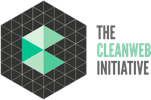In today’s business world, responding to Requests for Proposal (RFPs) is a common practice. However, the process of creating and submitting RFP responses can be time-consuming and complex. Many organizations struggle with managing the entire proposal process efficiently due to its manual nature. In such cases, using an RFP response software can streamline the proposal process by automating several steps involved in it.
An RFP response software helps businesses to manage all their proposals from a centralized location. It offers features like collaboration tools, document management systems, and analytics that help teams work together seamlessly on proposals. The software also provides templates and workflows that simplify the creation of new RFP responses. By implementing this tool, businesses can reduce errors, save valuable time and resources while increasing proposal quality and enhancing their chances of success. This article will explore how an RFP response software can benefit organizations and provide guidance on choosing the right solution for your needs.
The Challenges Of RFP Response Management
What are the challenges of RFP response management? Responding to a request for proposal (RFP) can be a significant undertaking, requiring coordination across multiple teams and departments. It often involves gathering information from various sources, developing a comprehensive response that addresses all requirements, and submitting it before the deadline.
One of the biggest hurdles in managing an RFP response is ensuring accuracy and completeness. With so many moving parts involved, it can be challenging to keep track of everything required for submission. Additionally, there may be conflicting priorities or differing opinions on what should be included in the final document. As a result, miscommunication or errors during any stage of the process could jeopardize your chances of winning the bid.
Benefits Of Implementing An RFP Response Software
Despite the challenges faced in RFP response management, implementing an appropriate software can bring significant benefits. One of the main advantages is streamlining the proposal process, which ultimately saves time and resources. With a comprehensive system that offers real-time collaboration, team members can work simultaneously on different sections of the proposal. This ensures consistency across all responses while reducing errors caused by version control issues.
Another benefit of using RFP response software is its ability to improve accuracy and quality. The software provides templates for each question or section within the RFP, making it easier for teams to respond with consistent messaging and branding guidelines. Moreover, these tools also offer content libraries containing pre-approved materials such as case studies, whitepapers, and other marketing collateral that can be used to support your response. By leveraging this information effectively, you can create compelling proposals that not only address client needs but also differentiate your organization from competitors.
Key Features To Look For In An RFP Response Software
When looking for an RFP response software, there are key features that should be considered. Firstly, the software must have customization capabilities to ensure that it can cater to the specific needs of a business. This would include having templates and proposal libraries so that businesses can easily create proposals without starting from scratch every time. Additionally, the ability to automate certain processes such as document assembly and content reuse is important in order to streamline the proposal process.
Another feature to consider is collaboration tools within the software. The ability for teams to work together on proposals simultaneously enhances efficiency and productivity. Collaboration tools could include real-time editing, commenting features, and task assignment functionalities. Lastly, reporting and analytics capabilities should also be taken into consideration when choosing an RFP response software. Analyzing data about proposal success rates, common themes among clients’ requirements, and team performance metrics aids in improving future proposals and overall strategy.
When selecting an RFP response software, it is important to keep these key features in mind in order to optimize your proposal process. By ensuring that customization capabilities, collaboration tools, and reporting and analytics functionalities are available within the software chosen, businesses will benefit from increased efficiency and productivity throughout their proposal process.
Tips For Choosing The Right RFP Response Software
Having identified the key features to look for in an RFP response software, it is now time to choose the right one. This can be a daunting task given the numerous vendors and options available in the market today. However, with careful consideration of some critical factors, you can streamline your proposal process by selecting the best-fit software.
Firstly, consider the scalability and flexibility of the software. As your business grows or changes its needs, it’s essential that your chosen solution has the capability to accommodate these transformations seamlessly without disruptions. Secondly, evaluate how user-friendly the software is; this will impact not only onboarding but also adoption rates across all teams using it. Thirdly, assess whether you need cloud-based or on-premise deployment. Cloud-based solutions offer more advantages such as ease of access from any location while on-premise deployment provides enhanced security measures that may suit your organization’s data protection policies better. Lastly, do not forget to compare pricing structures from different vendors carefully and select what aligns with your budgetary requirements.
To sum up, choosing an RFP response software requires thorough research and evaluation of various factors that meet both organizational goals and objectives while keeping within budgetary constraints. By following these tips closely, you are sure to find a solution that fits your unique business needs promptly.
Best Practices For Streamlining Your Proposal Process With An RFP Response Software
Like a well-oiled machine, an efficient proposal process can help organizations win more business. Incorporating RFP response software into this process is a smart move for any organization looking to streamline their proposal process. Best practices for using RFP response software involve identifying key stakeholders, defining roles and responsibilities, establishing clear communication channels, and ensuring data accuracy.
Effective use of RFP response software requires the identification of all necessary stakeholders involved in the proposal process. These may include sales teams, subject matter experts, executive leadership teams, and legal teams. Once identified, it is important to define each stakeholder’s role and level of responsibility within the proposal process. Clear communication channels should also be established among these stakeholders to keep everyone informed about deadlines and other crucial information that impacts the overall success of the proposal. Finally, by ensuring that all data entered into the software is accurate and up-to-date, organizations can optimize their workflow processes while reducing errors and eliminating redundant tasks.
Conclusion
Managing RFP responses can be a daunting task for any organization, but an efficient and effective process is crucial to winning new business. The implementation of an RFP response software offers several benefits in streamlining the proposal process, such as automating tasks, collaborating with team members, tracking progress, and ensuring compliance.
According to recent research by MarketsandMarkets, the global market size for procurement software is expected to grow from $5.4 billion in 2020 to $9.6 billion by 2025 at a CAGR of 12%, driven by the increasing demand for automated procurement processes and digitalization initiatives across various industries. This statistic highlights the importance of technology adoption in streamlining procurement processes and staying ahead of competitors.
When choosing an RFP response software, it’s essential to look for key features that cater to your organization’s specific needs. Additionally, adopting best practices like creating templates, leveraging data analytics, and conducting post-mortem analysis can further optimize your proposal process. By implementing an RFP response software with these best practices in place, organizations can increase efficiency while improving their chances of securing more business opportunities.




